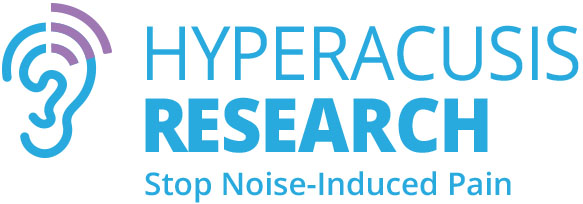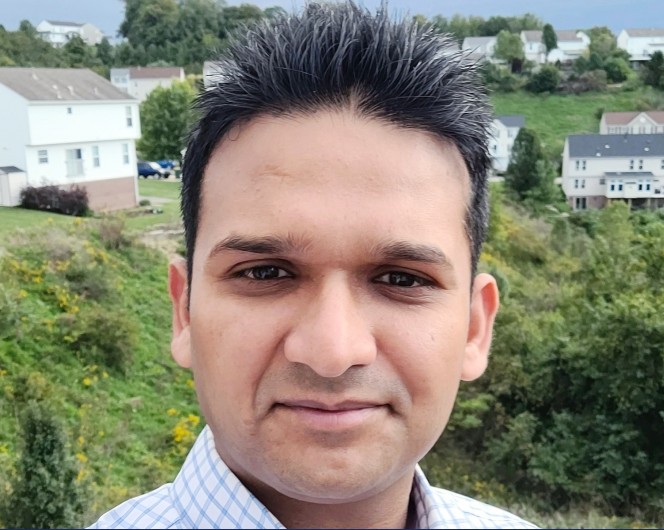The recipient of our next Hyperacusis Research research grant is Manoj Kumar, Ph.D.!
Dr. Kumar, an assistant professor of otolaryngology at the University of Pittsburgh, will be researching the KCNQ2/3 potassium channel as it relates to the mitigation of noise-trauma–induced hypersensitivity to sounds in mice.
Welcome, Dr. Kumar!
Noise-induced hearing loss (NIHL) is one of the most common causes of hearing disorders. NIHL reduces the auditory sensory information relayed from the cochlea to the brain, including the primary auditory cortex (A1). To compensate for reduced peripheral sensory input, A1 undergoes homeostatic plasticity. Namely, the sound-evoked activity of A1 excitatory principal neurons (PNs) recovers or even surpasses pre-noise trauma levels and exhibits increased response gain (the slope of neuronal responses against sound levels). This increased gain of A1 PNs after NIHL is associated with highly debilitating hearing disorders, such as tinnitus (perception of phantom sounds), hyperacusis (painful perception of sounds), and hypersensitivity to sounds (increased sensitivity to everyday sounds). Despite the high prevalence of these hearing disorders, treatment options are limited to cognitive behavioral therapy and hearing prosthetics with no FDA-approved pharmacotherapeutic options available. Therefore, to aid in the development of pharmacotherapeutic options, it is imperative to 1) develop animal models of these hearing disorders, 2) identify the brain plasticity underlying these hearing disorders, and 3) test potential pharmacotherapy to rehabilitate hearing and brain plasticity after NIHL. Here, we aim to develop a novel mouse model of hypersensitivity to sounds, identify its underlying A1 plasticity, and test pharmacotherapy to mitigate it after NIHL.
Long-term goal: The long-term goals of this project are to identify the molecular, cellular, and circuit mechanisms underlying the plasticity of the auditory cortex after noise-induced hearing loss (NIHL). Based on our findings, future studies will investigate the causal role of several neuron types in the development of hypersensitivity to sounds and hyperacusis after NIHL and the synaptic and intrinsic mechanisms underlying the plasticity of these neurons after NIHL. Determining the inhibitory circuit mechanisms underlying the plasticity of the auditory cortex (AC) after NIHL will reveal novel therapeutic targets for treating and rehabilitating the impaired hearing after NIHL. Also, because AC plasticity is associated with hyperexcitability-related disorders such as tinnitus and hyperacusis, a detailed mechanistic understanding of AC plasticity will highlight the path for the development of novel treatments for these disorders. Moreover, our findings will provide insights into AC plasticity occurring in hearing loss induced by ototoxic drugs or ear diseases and in other pathologically increased central gain disorders, like tinnitus and hyperacusis.
Hyperacusis Research raises money for research grants to find a cure for hyperacusis, which are awarded through our partner, Hearing Health Foundation (HHF), with their Emerging Research Grants (ERG) program. See the full list of 2025 HHF ERG grant awards here: https://hearinghealthfoundation.org/blogs/meet-the-2025-emerging-research-grants-scientists


I think the main causes of Hyperacusis & tinnitus are: Cochlear Synaptopathy / damaged spiral ganglion terminals. The spiral ganglion neurons start to rectract when they are not being used (not receiving information)… akin to how jaw bone begins to atrophy when teeth are missing or muscle atrophy when not being used. “Use it or lose it.”
I believe there is subclinical recruitment causing hypersensitization from damaged Spiral Ganglion Terminals and cochlear haircells.
Also the auditory cortex turns up its ‘gain’ to to help compensate for the decreased input that is not coming in—as a result of the cochlear Synaptopathy and cochlear haircell degeneration.
The solution for most people is regeneration of the Spiral Ganglion Nuerons and cochlear haircells.
Obviously the best solution is to find a way to turn on genes for regeneration of SGN & Cochlear haircells with gene editing.
Zebra fish and birds regenerate cochlear haircells. It’s been demonstrated that regeneration starts to happen to humans already, partially.
Gene editing carried to to Cochlea and cranial nerve 8 through a virus e.g, adenovirus could repair the: Cochlear Haircell cells & Spiral Ganglion Neurons (cn8). This would restore hearing, stop/ decrease severity of tinnitus and hyperacusis would be resolved.